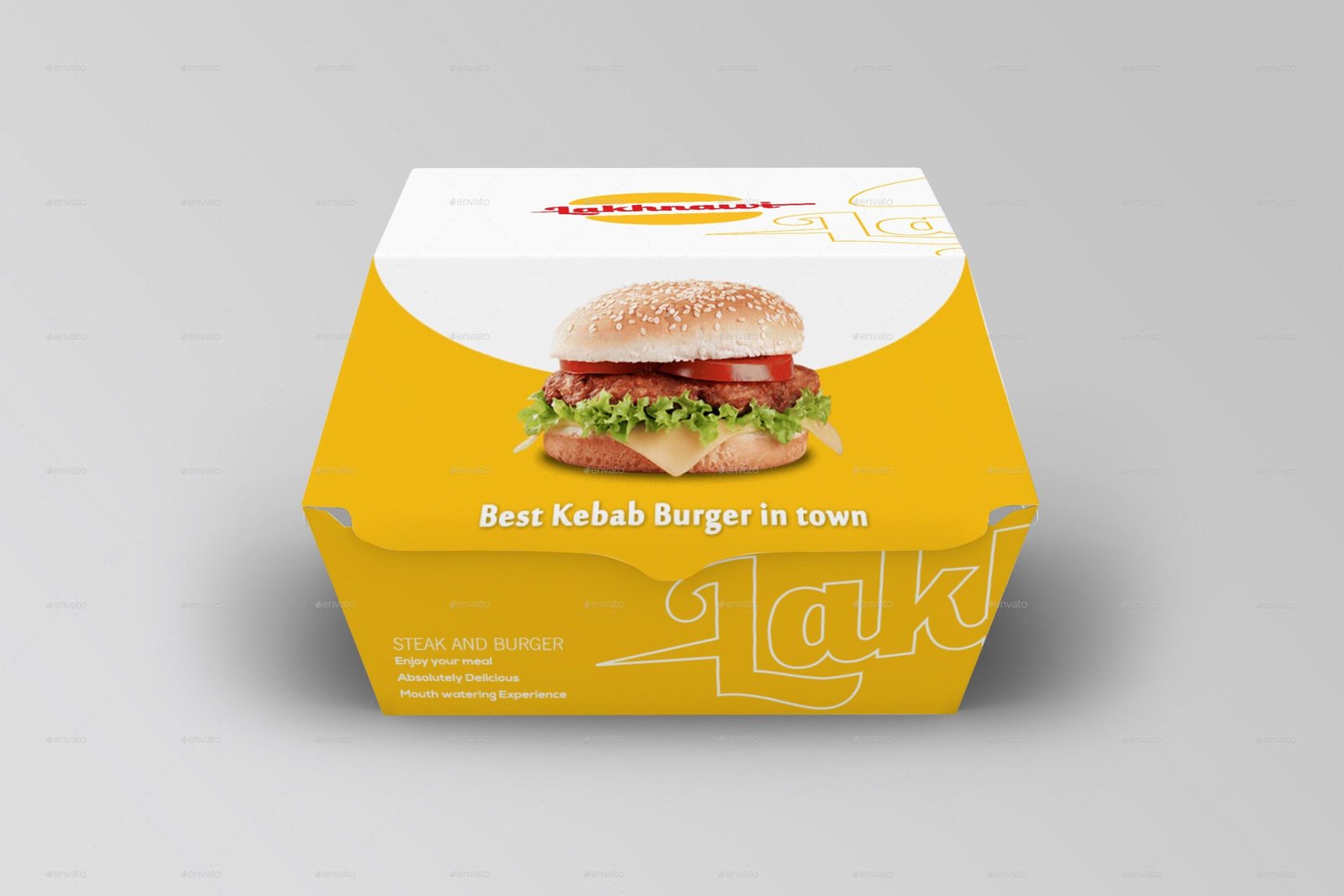Innovative Packaging Designs from Around the World
In an increasingly visual and competitive market, packaging has become much more than a means of containing a product. From eco-conscious designs to inventive shapes that reflect a brand’s unique identity, packaging plays a pivotal role in creating memorable customer experiences. Across the globe, brands are using innovative packaging solutions to stand out and connect with their customers in fresh ways. This post delves into some of the most creative and unique packaging designs around the world, including how the burger boxes leverage innovation to enhance brand engagement.
Sustainability A Global Priority in Packaging
Eco-friendly packaging has become a significant trend globally, with businesses prioritizing materials and designs that minimize environmental impact. Brands from various countries are setting the standard with sustainable and eye-catching packaging solutions.
Biodegradable Packaging in Japan
Japan is renowned for its commitment to environmental responsibility, and many companies are turning to biodegradable packaging as a solution. Brands use materials like rice paper and compostable plant-based films for packaging, aligning with consumers’ growing concerns for the environment. These materials break down naturally and are often combined with minimalist designs that create an appealing aesthetic while reducing waste.
Reusable Containers in Europe
European brands are leading the way in designing reusable packaging to reduce single-use waste. Companies in Germany and the Netherlands are creating containers that can serve multiple purposes. These designs range from durable glass jars for sauces that can be repurposed at home to sturdy containers that can be returned for a deposit. Not only do these reusable designs promote sustainability, but they also attract environmentally conscious consumers who appreciate brands with a commitment to reducing waste.
Interactive and Fun Packaging Concepts
Interactive packaging offers customers an engaging experience, turning product packaging into a part of the brand’s narrative. By making the packaging itself a memorable experience, companies can connect with consumers on a deeper level.
Fun Twistable Bottles in South Korea
South Korean companies often focus on creating interactive and fun packaging designs that resonate with a younger demographic. One standout design is the twistable bottle, where customers can twist and pop open the packaging in a unique way. This type of playful packaging not only delights customers but also becomes a talking point on social media, expanding the brand’s reach organically. These interactive features are carefully incorporated to balance functionality and fun.
QR Codes and Augmented Reality in the United States
In the U.S., many brands are incorporating digital elements like QR codes and augmented reality (AR) into their packaging designs. QR codes that lead to exclusive content, videos, or virtual experiences are becoming more common. For example, scanning a QR code on a beverage bottle might lead to an AR experience showing how the product is sourced and made. Such interactive elements encourage repeat engagement and offer an innovative way to share more about the brand and product.
Unique Aesthetic Designs for Brand Identity
Packaging that reflects a brand’s identity through distinctive aesthetic choices enhances recognition and creates a strong emotional connection with consumers.
Vibrant Colors and Patterns in Mexico
Mexican brands often use bold, vibrant colors and traditional patterns to create striking packaging. This design approach not only attracts attention but also conveys the cultural richness and vibrancy associated with Mexican heritage. From packaging for hot sauces to the intricate patterns on tortilla boxes, these designs are visually compelling and convey a strong brand story. The use of vivid patterns and colors also makes Mexican packaging highly Instagrammable, which amplifies the brand’s reach on social media platforms.
Minimalism and Clean Lines in Scandinavia
In contrast, Scandinavian packaging designs are known for their minimalist aesthetic. Swedish and Danish brands often use clean lines, neutral colors, and simple typography, which gives their packaging a modern, sophisticated look. This minimalist approach not only aligns with Scandinavian design principles but also communicates a sense of purity and quality that appeals to consumers. Minimalist packaging also reduces the need for excessive materials, supporting sustainable practices.
The Impact of Custom Packaging on Fast Food Brands The Burger Boxes
In the fast-food industry, innovative packaging can make a substantial impact on brand recognition and customer engagement. Custom burger boxes, for instance, have become a popular tool for branding and marketing. The burger boxes are specifically designed to enhance the customer experience, making the packaging memorable and highly shareable on social media.
Functional Yet Attractive Design
The burger boxes have evolved from basic containers into eye-catching packaging that reflects the brand’s identity. They often feature logos, bold colors, and creative typography, making them a branding asset rather than a simple food carrier. With easy-to-carry handles, foldable designs, and secure closures, the burger boxes are as practical as they are visually appealing. This ensures the food stays intact while enhancing the unboxing experience, which can be a key factor in attracting repeat customers.
Eco-Friendly Materials and Minimal Waste
Recognizing the importance of sustainability, many burger brands have adopted eco-friendly materials for their packaging. Recycled paper, biodegradable containers, and plant-based inks are increasingly common. The burger boxes often highlight these eco-conscious choices, appealing to environmentally conscious consumers who prioritize responsible brands. This commitment to reducing waste also enhances the brand’s image and attracts a loyal customer base that values sustainable practices.
Limited-Edition and Seasonal Packaging Around the World
Brands across the globe use limited-edition and seasonal packaging to create a sense of excitement and exclusivity. This type of packaging taps into the appeal of limited availability, encouraging consumers to purchase and collect.
Holiday-Themed Packaging in Canada
Canadian brands are known for creating holiday-themed packaging that celebrates major events and festivals. For example, during winter, coffee brands may introduce packaging with snowflakes, pine trees, and cozy colors. This seasonal packaging aligns with the festive spirit, making the product more appealing for gifting or sharing. The limited-time designs add an element of collectability, encouraging customers to try the product while it’s available.
Regional Inspirations in Indian Packaging
Indian brands often draw on regional art styles and motifs for their limited-edition packaging. For instance, they might incorporate traditional Indian patterns and color palettes that reflect the diversity of the country’s cultural heritage. This approach not only celebrates Indian art but also resonates deeply with local consumers, enhancing their connection to the brand. Regional inspirations add a personal touch, allowing customers to feel a greater sense of pride in supporting a brand that honors cultural traditions.
The Role of Practicality in Innovative Packaging
While aesthetics and sustainability are important, practicality remains a crucial factor in packaging design. Innovative packaging must also be functional, ensuring that the product reaches the consumer in perfect condition.
Stackable Designs in Australia
In Australia, many brands have developed stackable designs for packaging, especially in the fast-food industry. These stackable options ensure that food can be transported easily without compromising the quality or presentation of the meal. Stacking also helps optimize space, making it easier for delivery drivers to handle multiple orders at once. Such practical considerations enhance the customer experience and reflect well on the brand’s attention to detail.
Protective Layers in Chinese Packaging
In China, packaging often includes protective layers, especially for fragile items. Brands frequently use padding or reinforced layers to ensure that products arrive safely at their destination, even when delivered over long distances. This approach is particularly important for items like specialty teas or intricate snacks, where quality and presentation are key. The focus on protection underscores the brand’s commitment to delivering a high-quality product and fosters customer trust.
Final Reflections on Global Packaging Innovations
Innovative packaging is more than just an aesthetic choice; it plays a significant role in customer experience, sustainability, and brand identity. From biodegradable materials in Japan to vibrant colors in Mexico and functional yet appealing designs in the burger boxes, brands around the world are reimagining packaging as a tool for connection and engagement.






